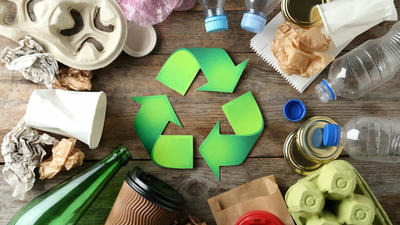5 Tips for Managing Household Waste Efficiently
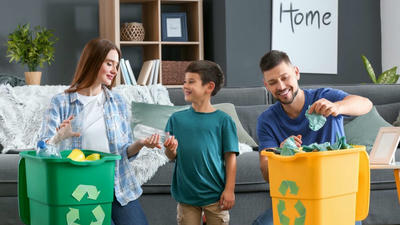
Managing household waste is an essential aspect of maintaining a clean and sustainable home. As awareness of environmental issues grows, more people are looking for ways to reduce their waste footprint and contribute to a healthier planet. Effective waste management not only helps you declutter your space but also promotes recycling, composting, and reducing overall waste.
Understanding Household Waste
What Is Household Waste?
Household waste refers to the waste generated by a household during everyday activities. This can include food scraps, packaging, paper products, glass, metals, electronics, and hazardous waste. Understanding the types of waste your household generates is the first step toward effective waste management.
Types of Household Waste
Organic Waste: Includes food scraps, garden waste, and other biodegradable materials.
Recyclable Waste: Comprises materials that can be recycled, such as paper, cardboard, glass, plastics, and metals.
General Waste: Refers to non-recyclable and non-compostable waste, such as broken items, certain plastics, and packaging.
Hazardous Waste: Includes items that can harm the environment or human health, such as batteries, chemicals, electronic waste, and certain cleaning products.
The Importance of Managing Household Waste
Environmental Impact: Efficient waste management reduces the amount of waste sent to landfills, conserves natural resources, and minimizes pollution.
Cost Savings: Proper waste management can lead to reduced disposal fees and potential savings through recycling programs.
Health and Safety: Managing waste effectively helps prevent health hazards associated with improper waste disposal, such as pests and disease.
Community Involvement: Engaging in responsible waste management fosters a sense of community and encourages others to adopt similar practices.
Tip 1: Implement a Waste Sorting System
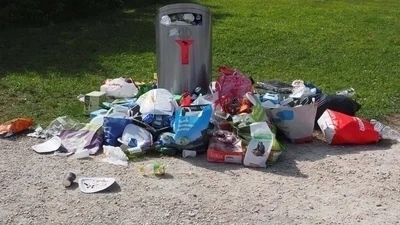
The Benefits of Waste Sorting
Waste sorting is a critical step toward efficient waste management. By separating your waste into different categories, you can ensure proper disposal and increase the chances of recycling and composting.
Reduces Contamination: Proper sorting minimizes contamination in recyclable and compostable materials, improving the effectiveness of recycling streams.
Enhances Recycling Rates: When waste is sorted correctly, it becomes easier for recycling facilities to process materials and produce new products.
Facilitates Efficient Disposal: Sorting helps you identify and manage hazardous waste appropriately, preventing environmental harm.
How to Set Up a Waste Sorting System
1. Designate Waste Bins
Separate Containers: Use separate bins for recyclables, organic waste, general waste, and hazardous waste. Clearly label each bin to avoid confusion.
Color-Coded System: Consider color-coded bins to make it visually easy to identify which bin is for what type of waste. For example, green for compost, blue for recyclables, and black for general waste.
2. Place Bins Strategically
Convenient Locations: Place your waste bins in easily accessible locations, such as the kitchen, garage, and utility room. This encourages household members to sort their waste properly.
Create a Sorting Station: Set up a dedicated waste sorting station that includes all the necessary bins in one spot for easy access.
3. Educate Household Members
Waste Sorting Guide: Create a simple guide that outlines what can and cannot be recycled or composted. Share this guide with all household members to ensure everyone understands the system.
Regular Reminders: Periodically remind family members to be mindful of waste sorting, especially if they frequently make mistakes.
Maintaining Your Waste Sorting System
Regular Checks: Inspect your bins regularly to ensure that waste is being sorted correctly. Clean the bins as needed to prevent odors and mess.
Adjust as Necessary: Based on the volume of waste generated, adjust the size or number of bins to suit your household’s needs.
Tip 2: Reduce Waste at the Source
Why Reducing Waste is Important
Reducing waste at the source is one of the most effective ways to manage household waste efficiently. By minimizing the amount of waste generated in the first place, you can significantly decrease your overall waste footprint.
Environmental Benefits: Reducing waste helps conserve resources, energy, and space in landfills, contributing to a healthier planet.
Cost Savings: By reducing consumption, you can save money on purchases and disposal fees.
Improved Quality of Life: Living with less clutter promotes a cleaner, more organized home environment.
Strategies to Reduce Waste at the Source
1. Buy in Bulk
Bulk Purchases: Purchase non-perishable items in bulk to reduce packaging waste. Consider joining a membership warehouse store for discounts on bulk items.
Reusable Containers: Bring your own reusable containers to stores that allow bulk purchases, minimizing plastic waste.
2. Choose Minimal Packaging
Eco-Friendly Brands: Opt for products with minimal or recyclable packaging to reduce waste. Look for brands that prioritize sustainability.
Plan Your Meals: Prepare a weekly meal plan to prevent food waste by buying only what you need.
3. Avoid Single-Use Items
Reusable Alternatives: Replace single-use items such as plastic bags, straws, and cutlery with reusable alternatives to reduce waste.
Compostable Products: If single-use items are unavoidable, look for compostable options that can be disposed of responsibly.
4. Practice Mindful Consumption
Assess Needs: Before making a purchase, ask yourself if you truly need the item. Avoid impulse buying to reduce excess waste.
Quality Over Quantity: Choose high-quality items that will last longer, rather than cheaper, disposable options.
Tip 3: Embrace Recycling
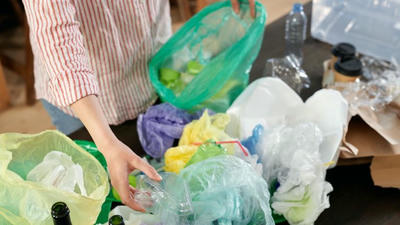
The Importance of Recycling
Recycling is a powerful tool for reducing waste and conserving resources. By recycling materials, you can help close the loop in the production process and reduce the need for new raw materials.
Conserves Resources: Recycling helps conserve natural resources, such as timber, water, and minerals, by reusing materials already in circulation.
Reduces Energy Consumption: It typically takes less energy to recycle materials than to produce new ones, resulting in lower greenhouse gas emissions.
Supports the Economy: Recycling creates jobs in the recycling and manufacturing industries, contributing to a sustainable economy.
How to Maximize Your Recycling Efforts
1. Know Your Local Recycling Guidelines
Local Regulations: Familiarize yourself with your local recycling rules, as recycling guidelines can vary by location.
Accepted Materials: Learn which materials are accepted in your local recycling program, as improper items can contaminate the recycling stream.
2. Rinse Before Recycling
Clean Containers: Rinse out food and beverage containers before placing them in the recycling bin to prevent contamination.
Remove Labels: While not always necessary, removing labels can improve the quality of recycled materials.
3. Store Recyclables Properly
Clean and Dry: Store recyclables in a clean, dry space to prevent contamination and odors.
Avoid Overloading: When your recyclables bin fills up, take them to the recycling center rather than letting them overflow, which can lead to contamination.
4. Participate in Community Recycling Programs
Community Initiatives: Get involved in local recycling programs, challenges, and initiatives to promote awareness and increase recycling participation in your community.
Education Programs: Encourage schools and local organizations to offer education programs on the importance of recycling.
Tip 4: Compost Organic Waste
The Benefits of Composting
Composting is a natural process that turns organic waste into nutrient-rich compost, which can enrich soil and support plant growth. Composting not only reduces the amount of organic waste sent to landfills but also benefits your garden and the environment.
Reduces Landfill Waste: Composting diverts organic materials from landfills, decreasing greenhouse gas emissions and prolonging landfill lifespan.
Enhances Soil Health: Compost improves soil structure, retains moisture, and provides essential nutrients for plants.
Supports Biodiversity: Compost enriches the soil, fostering a diverse ecosystem of beneficial microorganisms that help plants thrive.
How to Start Composting at Home
1. Choose a Composting Method
Bin Composting: Use a compost bin to contain your organic waste and create a controlled environment for decomposition.
Vermicomposting: Consider using worms to break down food scraps in a bin, creating nutrient-rich compost in a smaller space.
Bokashi Method: This method involves fermenting organic waste in a specially designed jar using bokashi flakes, which can then be buried in soil to decompose anaerobically.
2. Identify What to Compost
Compostable Materials: Include fruit and vegetable scraps, coffee grounds, eggshells, grass clippings, leaves, and paper products.
Avoid Non-Compostables: Stay away from meat, dairy, oily foods, and non-compostable materials, such as plastic or synthetic products.
3. Maintain Your Compost Pile
Balance Greens and Browns: Aim for a balanced mix of nitrogen-rich “greens” (food scraps, grass clippings) and carbon-rich “browns” (dry leaves, cardboard).
Turn Regularly: Aerate the compost pile by turning it every few weeks to promote decomposition and avoid odors.
4. Harvest and Use Compost
Check for Readiness: Your compost should be dark, crumbly, and earthy-smelling when ready. This can take several months, depending on your composting method.
Use as Fertilizer: Once ready, use the compost in your garden to enrich soil, promote plant growth, and minimize chemical fertilizers.
Tip 5: Educate and Engage Your Family
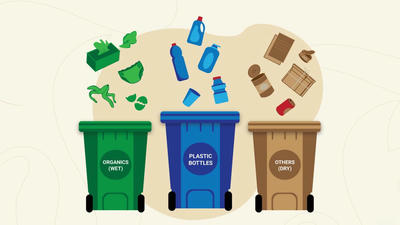
The Importance of Education
Engaging your family members in waste management efforts fosters a sense of responsibility and encourages better habits. Education is key to ensuring everyone understands the importance of reducing, reusing, recycling, and composting.
Promotes Involvement: When family members understand the impact of their actions, they are more likely to participate actively in waste management efforts.
Instills Lifelong Habits: Teaching children about waste management can instill sustainable habits that last a lifetime.
Brings the Family Together: Working together on waste management initiatives can strengthen family bonds and foster teamwork.
Strategies for Educating Your Family
1. Host Workshops
Family Meetings: Hold family meetings to discuss waste management practices and the importance of being mindful about waste.
Interactive Workshops: Organize engaging activities, such as DIY composting workshops or recycling games, to create a fun learning environment.
2. Create an Educational Environment
Resource Materials: Provide books, articles, and online resources about waste management and sustainability for the family to read together.
Visual Reminders: Use posters or infographics to display in common areas of the home that highlight tips for reducing waste and recycling.
3. Set Family Goals
Waste Reduction Targets: Establish family goals for waste reduction, such as decreasing landfill waste by a specific percentage or achieving a certain level of recycling.
Incentives: Create a reward system for meeting waste management goals, such as family outings or small treats.
4. Lead by Example
Demonstrate Good Practices: Show your family how you manage waste in your daily life by practicing what you preach.
Share Success Stories: Celebrate achievements in waste reduction or recycling to motivate family members and create a positive atmosphere around waste management.
Conclusion
Efficient household waste management is crucial for promoting sustainability and reducing your environmental footprint. By implementing a waste sorting system, reducing waste at the source, embracing recycling, composting organic waste, and educating your family, you can make a significant impact on your waste management efforts.
By taking consistent action and fostering a culture of responsibility and awareness, you can not only improve your household’s waste management practices but also contribute to the broader goal of protecting the environment for future generations. Together, we can create a cleaner, healthier, and more sustainable world through mindful waste management, benefiting not just our homes but our communities and the planet as a whole.


